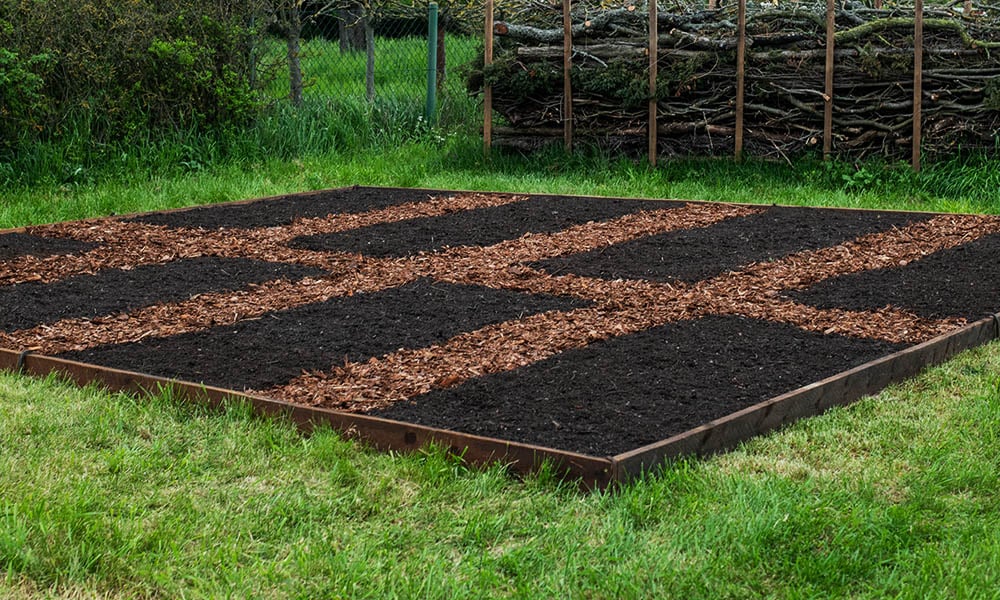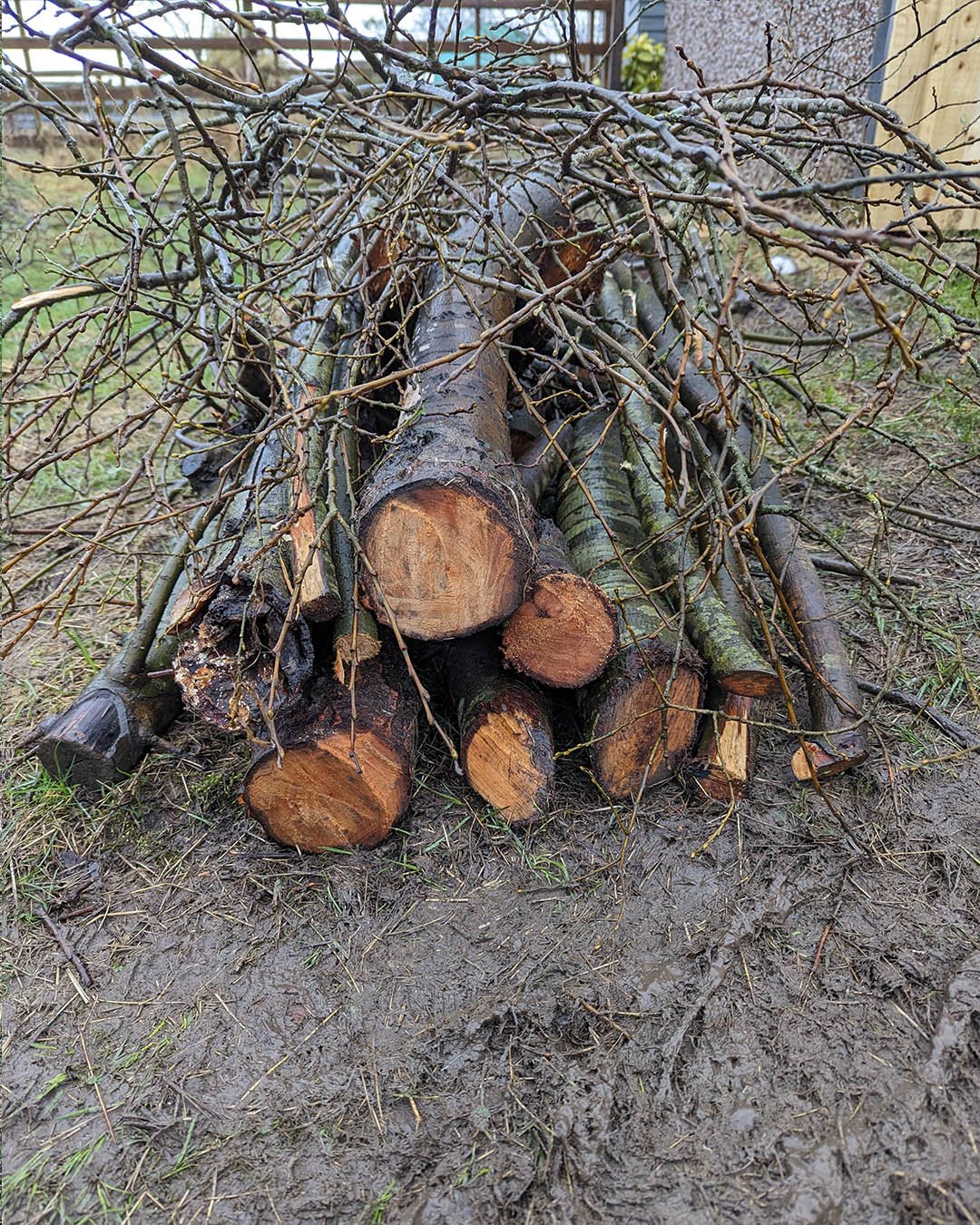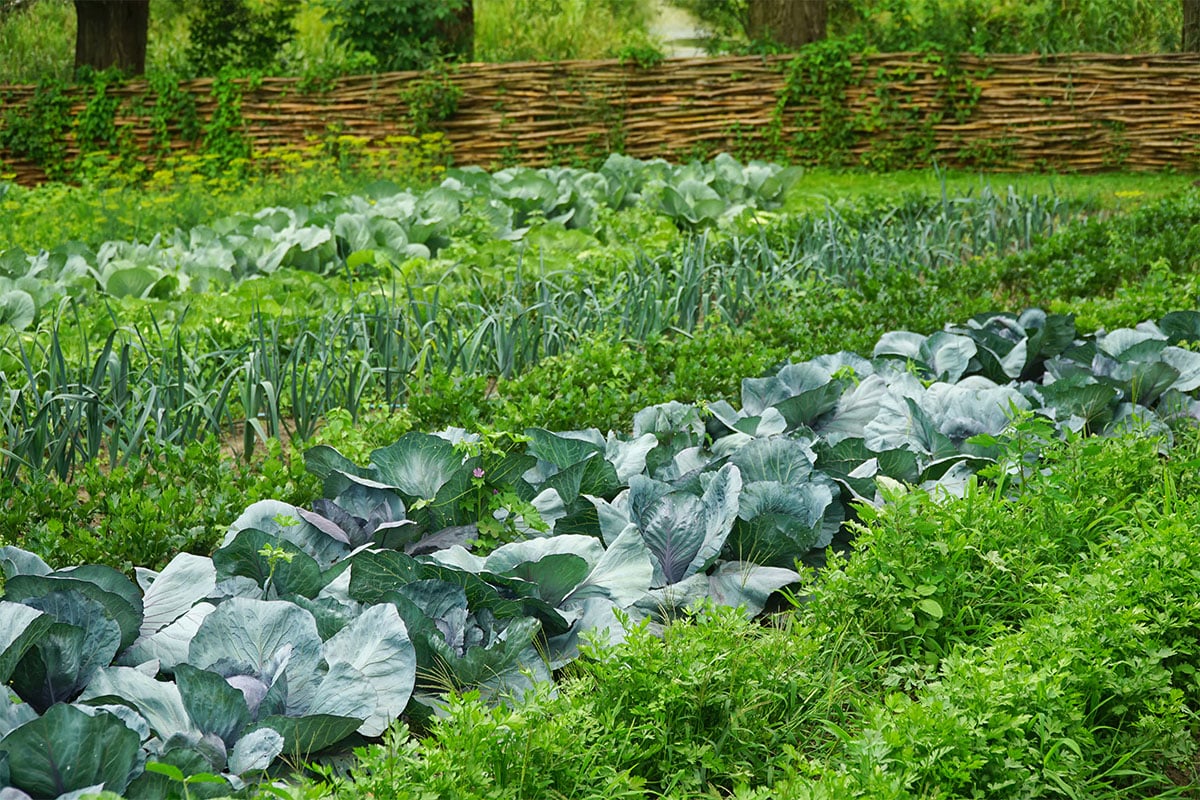Composting is essentially recycling organic waste into a nutrient-rich medium for growing fruit, veg and flowers. Several different methods of composting cater to specific needs and locations, such as backyard composting, vermicomposting, and bokashi composting.
Hot or cold composting is the most common method for home gardeners, where organic waste is layered in a designated outdoor space, allowing for natural decomposition with the help of microbes, oxygen, and moisture.
Vermicomposting involves using worms to break down organic waste in a contained system, making it suitable for both urban and rural settings.
Bokashi composting is an anaerobic process that relies on adding fermented 'bokashi' material, capable of breaking down food waste more rapidly than traditional composting methods.
Each composting method has its advantages and drawbacks, with the choice mainly depending on individual preferences, space availability, and types of waste intended for composting.
By exploring these different methods, we can decide which composting technique best suits our gardens and allotments.
Types of Composting Methods
This section highlights the four popular composting methods: Aerobic Composting, Anaerobic Composting, Vermicomposting, and Bokashi Composting.
Aerobic Composting (Hot Composting)

Aerobic composting is the process of breaking down organic materials in the presence of oxygen. This method relies on microorganisms that require oxygen to decompose organic waste.
The compost pile needs to be turned regularly to ensure proper aeration and encourage the growth of aerobic bacteria. This expedites the decomposition process and results in rich, high-quality compost.
This is one of the quickest ways to compost and is what most pros will do, but keeping a pile warm requires some knowledge and effort.
To start with you want the right mix of materials, these are usually described as your greens and your browns. Greens are your live plant and food waste, think grass prunings, tomato plant prunings, food scraps etc. These are packed full of nitrogen and really get the temps going. But to avoid your compost turning into a pile of sludge you also need to balance your greens with some browns.
Browns are more carbonaceous materials, usually added in the form of cardboard or woodchips. These break up your compost and allow air pockets to form which is essential for the aerobic bacteria to thrive.
The easiest way to hot compost is to aim for a 50/50 mix of greens and browns and to alternate them in small layers, like a compost lasagne. You also want to turn the pile every few weeks to speed up the process.
A couple of quick tips - if your compost smells bad, then you have too many greens, so add some more browns. If it wont heat up then you have too many browns and add some more greens!
Anaerobic Composting (Cold Composting)

Unlike aerobic composting, anaerobic composting takes place in an oxygen-deprived environment. This method uses different microorganisms that do not require oxygen to break down organic waste.
Anaerobic composting is generally slower than aerobic methods and may produce an unpleasant odour due to the byproducts generated during the process. On the other hand, it requires less maintenance and reduces the production of greenhouse gases.
This is by far the easiest way of composting, just throw all of your garden waste, food scraps, grass clippings etc., into one giant pile and let it compost down into compost! It can just take a while. That is the main drawback.
Vermicomposting

Vermicomposting, or worm composting, involves using specific types of worms to consume and break down organic waste. The worms eat the organic material and produce nutrient-rich castings, which serve as an excellent soil amendment.
Vermicomposting is a relatively fast and efficient process, prevents foul odours, and is suitable for small-scale, indoor operations.
Bokashi Composting

Bokashi composting is a type of anaerobic composting that uses beneficial microorganisms to ferment organic waste. Those microbes, called Effective Microorganisms (EMOs), are introduced to the waste in the form of bokashi bran.
The process involves layering the waste with bokashi bran in an airtight container, which then ferments for a few weeks. The resulting compost can be mixed with soil or added to a traditional compost pile for further decomposition.
Compost Bins
Compost bins are an easy way of composting, you add all your food scraps and garden waste to the bin, and it will turn to compost over time.
This is usually cold composting, as the bins are not large enough to generate enough heat to promote hot composting. However, this is not always true, as insulated compost bins are available to promote hot composting even in small spaces.
The classic allotment favourite is the Dalek compost bin, the nickname coming from its resemblance to the Drs nemesis.

These bins are cheap (you can often get them for free) and don't take up much room. Many people use them but I much prefer an open pile. The bins have a habit of going slimy and stinky if you don't keep on top of your materials!
Hot compost bins such as the hotbin are much more expensive but have a lot of advantages of their own. They can make compost in as little as two months and also allow for composting of meat and dairy products, apparently, they can compost entire chicken carcasses!
Choosing the Right Composting Method
Various composting methods are available, and selecting the right one for your specific needs will depend on several factors. Consider these sub-sections when making your decision:
Space and Location
Your available space and location will play a significant role in determining the appropriate composting method. Small gardens or urban settings may benefit from compact methods like vermicomposting or bokashi, while larger gardens and allotments can accommodate more extensive systems like pile composting.
Material and Waste Type
The type of waste materials generated will also influence the choice of composting method. Decomposing food scraps, leaves, grass clippings, and other organic waste may require different methods to ensure proper breakdown.
Hot composting, for example, efficiently handles food scraps and kills any weed seeds, while cool composting works best with garden waste like leaves and grass clippings.

Temperature and Climate
Temperature and climate conditions will impact the decomposition process, and some composting methods are better suited for specific environments. Hot composting methods, which rely on high temperatures, may struggle in cooler climates. Consider insulated or enclosed systems like tumblers or insulated bins in colder regions.
Time and Maintenance
The time and effort you can dedicate to compost maintenance should also factor into your decision. Some composting methods require more monitoring and turning (like hot composting), while others need less maintenance (cold composting or vermicomposting).
Composting Tips and Tricks
Balancing Carbon and Nitrogen
Achieving the right balance of carbon and nitrogen in your compost pile is essential for efficient decomposition. Carbon-rich materials, known as "brown" materials, include dead leaves, paper, and wood. Nitrogen-rich materials, called "green" materials, consist of grass clippings, kitchen scraps, and manure. Mixing these materials in your compost pile to maintain a good balance is recommended.
A great way to mix your greens and browns is layering, also known as the lasagne method. You layer alternate materials, one green layer then one brown, and so on.
Aeration and Ventilation
Proper aeration is key for efficient composting as oxygen is needed for decomposition. To ensure adequate aeration, turn or mix your compost regularly using a fork or a compost tumbler. This helps to break up compacted materials and introduce oxygen into the pile, promoting the growth of beneficial microbes.
More advanced industrial systems involve blowing air into your pile through a series of pipes and fans.

Moisture Control
Controlling the moisture level of your compost is also important - for hot composting at least. Compost should have the consistency of a wrung-out sponge. Too much moisture can lead to anaerobic conditions, resulting in odours and slow decomposition. To avoid this, add brown materials such as straw, shredded paper, or dry leaves, to help soak up excess moisture.
Conversely, if your compost pile is too dry, it will decompose slowly. In such cases, you should add water or green materials like kitchen scraps or green leaves to increase moisture.
Monitoring Compost Progress
Keep track of your compost progress to ensure it's working efficiently. The pile should heat up within a few days, indicating that the decomposition process is taking place. If the temperature drops, you may need to turn the pile or add more green materials to heat it up again. The compost is ready to use when it has a dark, crumbly texture and a pleasant earthy smell.
Building your own compost bin

Have you ever thought of building your own compost bin? Well, hopefully now I've sown the seed.
In this post, we go through all the major steps involved so you can see if it's right for you.
Building a compost bin is a fairly simple project that anyone could attempt themselves with a minimal amount of tools.
Lots of the same skills you learn making a compost bin can be used to tackle larger projects as you get more confident.
Building your own compost bin gives you the freedom to make it any size and style you want.
Let's face it if you cock up when making your compost bin it is probably the best time to do it! It's not the end of the world.
Then when you do attempt something more extravagant you will have more experience.
Essential Tools and Equipment

You will need a tape measure and pencil but relatively few power tools in order to build yourself a compost bin.
You can use either a handsaw or a circular saw. If you were only making one compost bin then a handsaw would get your job done!
But, If you feel confident and you are looking to speed through the process then I would definitely recommend a circular saw and speed square.
This is a winning combination and it is how I performed all my cuts. It dramatically increased the speed of the operation and left me with perfectly straight cuts.
Best Timber to Use
If you don't have any wood lying around that you could use, 6"x1" (150mm x 22mm) Treated Timber is really useful stuff, it's a great choice for building your compost bins or raised beds.
The 6"x1" provides a decent amount of cover per board. You will only need 6 boards one on top of the other and you have built your compost bin up to 3ft (900mm) high.

Pricing Up
We paid £5.20 for a 14ft (3.6m) length of 6"x1". This was from a timber wholesaler in the north of the UK so prices might vary depending on your area, but it's just to give you an idea.

This is not the total cost of the compost bins as we used some of the 6x1 to make some raised beds in our allotment Greenhouse.
A 3ft x 3ft x 3ft Compost bin will only cost around £40 for the materials, as you can get a good few boards cut from a 14ft (4.2m) length of timber.
You can buy 6"x1" boards in standard lengths, usually, these are - 8ft (2.4mm), 10ft (3.0m) 12ft (3.2m), 14ft (4.2m) and 16ft (4.8m), but check with your local timber merchant first.
We managed to get 4 boards @ 3ft long boards cut from our 14ft lengths to form the sides of our compost bin.
Making the frames
It can often be difficult to determine how big your compost bin needs to be which is why It can be useful to make one frame up. Cut it to the desired height and length you are thinking of and see how it looks.

You can maneuver it into its final position then once you are happy with its proportions you can make the other frames up. You don't want to build up all 3 frames just to realize you made them the wrong size.
If you want the compost bin to be smaller you can always cut more off. Then once you are happy you can proceed to making all the frames.
Once you have determined the length of your planter you can cut the 6"x1" boards to size. Once you have determined the height of your planter you can cut the 3"x2" vertical corner pieces to length.
Checking For squareness
Once you have screwed your frame together with one screw in each corner, you will then need to check that it is square. Both these readings on the tape measure should be exactly the same!
To do this you need to measure diagonally from corner to corner, then repeat the process from the opposite corner to corner. This is shown in the picture bellow

You will need to shimmy the frame around until both diagonal readings on the tape measure are exactly the same, this is how we know that the frame is perfectly square. Then add an extra screw in all 4 corners.
Spacing the 6"x1" Rails
You can use off-cuts of timber to make some spacers, these will go in between the 6"x1" rails and help you to space them up evenly.

We have used a 1"(25mm) Spacer because that is the thickness of the timber we have been using. It also gives us a decent amount of airflow around the compost bin.
Screwing on the 6"x1" Rails

When screwing on your 6"x1" rails, place your screws diagonally away from each other, this helps prevent movement in the frame.
Don't go too close to the edges of the timber with your screws and angle them inwards slightly to reduce the chances of the wood splitting.
I always recommend piloting holes whenever your can!
Assembling Your Frames
Once you have made all your frames you can lay them out ready for assembly.
The two frames on either side of the compost bin are exact mirror images of each other. They have a grove at the front that enables you to slide the boards in as the compost pile increases.
The back panel has two boards fixed in the middle to create another grove, this will allow boards to be slid in to separate the two halves of the compost bin.

The corner post at the front and center of the picture has been designed with 3 groves to receive all the boards at one end.
Completed Compost Bin


As you can see we managed to make an effective 2-bay compost bin only using a few tools and predominantly 6"x1" timber.
The front slats are floating and can be added or removed one by one. This allows easy access to the compost and makes for easy turning.
Hopefully, there might even be some detailed plans coming soon!





Michelle says
Hi, I use Brita filters but there is nowhere to recycle them on the Isle of Man, I believe the black granules are activated charcoal, this absorbs organic compounds as well as chlorine and other inorganics. The white/grey spherical granulesmight be deionising resin (or resins) which will exchange hardness ions and soften the water.
My question is; can I put the insides in my compost?
I asked Brita but it is such a palava trying to get an answer.
Many thanks,
Michelle